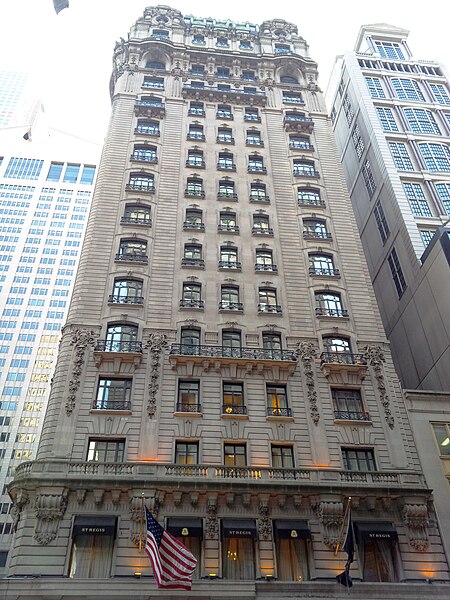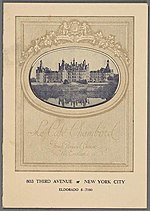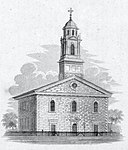St. Regis New York
1904 establishments in New York CityFifth AvenueHotel buildings completed in 1904Hotels established in 1904Hotels in Manhattan ... and 5 more
Midtown ManhattanNew York City Designated Landmarks in ManhattanSheraton hotelsSt. Regis hotelsUse mdy dates from November 2021

The St. Regis New York is a historic luxury hotel that opened in 1904. It is located at 2 East 55th Street in Manhattan, New York City, between Madison Avenue and Fifth Avenue. The hotel holds Forbes five-star and AAA five-diamond ratings.
Excerpt from the Wikipedia article St. Regis New York (License: CC BY-SA 3.0, Authors, Images).St. Regis New York
East 55th Street, New York Manhattan
Geographical coordinates (GPS) Address Nearby Places Show on map
Geographical coordinates (GPS)
| Latitude | Longitude |
|---|---|
| N 40.7614 ° | E -73.9746 ° |
Address
King Cole Bar
East 55th Street 2
10022 New York, Manhattan
New York, United States
Open on Google Maps








